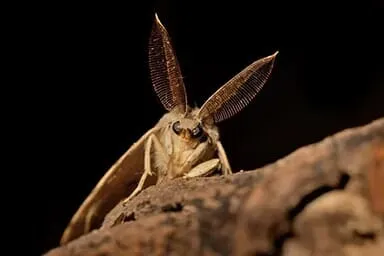Introducing the Antlion, the Tiny King of Your Backyard Jungle

One of the most unusual insects in Minnesota is the antlion. This tiny, yet formidable, creature is common in some areas of the state but often goes unnoticed due to its small stature.
When it is noticed, the antlion's strange burrowing behavior or fiendish appearance can be alarming to some homeowners. Below is more information on the mighty antlion.
An Introduction to the Antlion
Antlions, sometimes called doodlebugs, comprise a group of insects consisting of over 2,000 species. As happens with many other insect species, the antlion is best known for its larval stage, as insects in the adult stage are fairly ordinary in every respect.
Superficially, adult antlions resemble dragonflies with two sets of wings and a long, thin thorax, but they are poor fliers and are nocturnal, unlike the sun-loving dragonfly. Adult antlions have a short lifespan and usually die within a few weeks after emerging from their cocoons.
The most fascinating stage of life for the antlion, which draws the most attention from observers, is the larval stage. Antlion larvae possess a rotund body covered with tiny hairs, but their most noticeable body part is an enormous set of pincer-like jaws. If they receive appropriate nourishment, larvae can grow to approximately one-half of an inch in length by the time pupation occurs.
How Antlions Dig Their Pits
Their remarkable prey-trapping behavior is what sets apart antlions from almost any other insect species. Antlions dig a small, perfectly round pit that captures unwary small insects, which are then subdued and eaten as a matter of course.
Antlions choose sandy soil in a sheltered location away from rain and other disturbances to construct their pits. The sand makes digging easier for the antlion, and it also makes escape from the pit much less likely.
The antlion constructs its pit by alternately digging and "flicking" grains of sand from the pit. As the antlion digs, it moves backward in a circle and continues the pit construction process until the pit is up to two inches in diameter. Once the pit is constructed, the antlion partially buries itself at the bottom of the pit and awaits its prey.
How Antlions Capture and Eat Their Prey
Antlions can go without food for a long time, so they can afford to wait patiently for prey. However, once a hapless insect stumbles over the side of the pit, the antlion springs into action.
First, the antlion flicks sand at the prey in an effort to knock it down into the bottom of the pit. In many cases, the collapsing sides of the pit are sufficient to bring the prey down toward the antlion, even if the antlion is unable to strike the prey.
Next, once the prey has tumbled all the way to the bottom of the pit, the antlion grasps it with its strong pincers and injects toxic enzymes into the prey. The enzymes kill the prey and also convert internal organs into a "soup" that can be readily sucked from the corpse by the antlion. Once the antlion has finished feeding, it deftly flicks the remaining portion of the carcass from the pit, and the cycle begins anew.
How Antlions Interact With Humans
Despite their monstrous looks and ruthless killing behavior, antlions pose absolutely no threat to any living being much larger than themselves. They are not known to bite people, and they don't transmit any diseases. Their digging behavior is also harmless, as antlions are incapable of digging deep enough to cause damage.
In fact, antlions have a mildly beneficial relationship with people, as they do kill some ant species that can cause painful stings in humans. However, antlions probably do not consume enough ants to make a large impact in neighboring ant populations.
Despite their harmless nature, some persons are troubled by the presence of any insects and would rather remove them from their premises. There is usually no need to use pesticides to kill antlions; instead, simply mix small gravel or non-sandy soil into the areas where antlions dig their pits. This will prevent the antlions from being able to dig, and they will soon move to another area more suitable.
If you need help in controlling antlions or any other insect species in or around your home, then be sure to contact Paffy's Pest Control for assistance. They can provide you with guidance and are trained to professionally handle any pest situation in your home.







